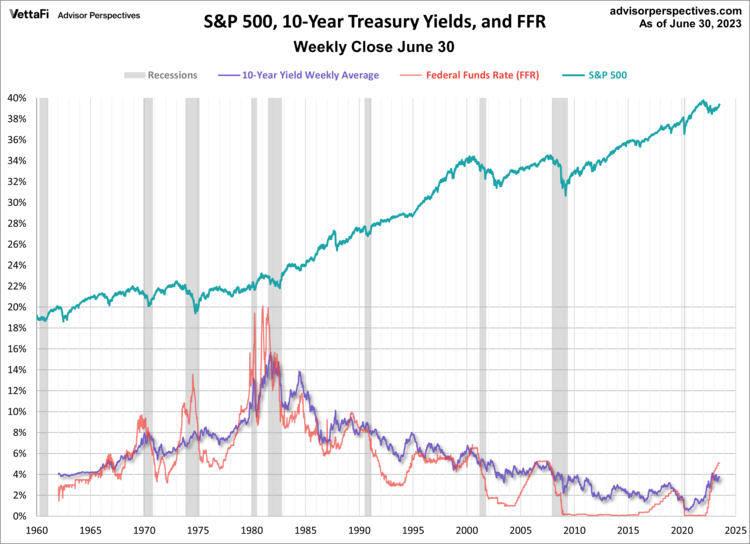Ueda's Vigilance: Monitoring Ripple Effects Of Rising Long-Term Yields

Table of Contents
Ueda's Balancing Act: Maintaining Stability Amidst Rising Yields
Governor Ueda's primary challenge is navigating a delicate balancing act. He must simultaneously control inflation and mitigate the risks associated with rapidly increasing long-term yields. This necessitates a shrewd approach to monetary policy.
-
Yield Curve Control (YCC): The BOJ's YCC policy, designed to keep 10-year government bond yields around zero, has been under pressure. Recent adjustments to YCC demonstrate Ueda's attempt to navigate the tension between inflation control and market stability. The widening gap between short-term and long-term yields signals a growing challenge to this approach.
-
Impact on JGB Prices: Rising long-term yields directly impact Japanese government bond (JGB) prices, leading to potential losses for investors holding these bonds. This volatility creates uncertainty within the market and necessitates careful management.
-
BOJ Intervention: The BOJ may intervene in the bond market to stabilize yields, although this approach carries its own set of risks. Frequent interventions can undermine the credibility of the central bank's policy stance.
-
Communication Strategy: Ueda's communication strategy is vital in managing market expectations. Clear and consistent communication about the BOJ's intentions and policy adjustments is essential to minimize market volatility and maintain confidence.
Ripple Effects on the Japanese Economy: Beyond the Bond Market
The impact of rising long-term yields extends far beyond the bond market, affecting several key sectors of the Japanese economy.
-
Yen Exchange Rate: Higher yields can attract foreign investment, strengthening the yen against other major currencies. However, a rapid appreciation of the yen could negatively impact Japan's export-oriented industries.
-
Corporate Investment: Increased borrowing costs due to higher long-term yields can dampen corporate investment, potentially hindering economic growth. Businesses may postpone expansion plans or reduce capital expenditures.
-
Consumer Spending: Rising interest rates can translate to higher borrowing costs for consumers, potentially reducing consumer spending and overall economic activity. This has a direct impact on the domestic economy.
-
Inflation Expectations: The interplay between rising yields and inflation expectations is complex. While higher yields can curb inflation by reducing demand, they can also contribute to cost-push inflation by increasing borrowing costs for businesses.
The Impact on Inflation: A Double-Edged Sword
The relationship between rising yields and inflation is multifaceted and presents a significant challenge for Ueda.
-
Demand-Pull Inflation: Higher yields can help curb demand-pull inflation by reducing borrowing and spending, thus cooling down an overheated economy.
-
Cost-Push Inflation: Conversely, rising yields can fuel cost-push inflation by increasing borrowing costs for businesses, leading to higher prices for goods and services.
-
Monetary Policy Effectiveness: The effectiveness of Ueda's monetary policy in controlling inflation will depend on the interplay of these opposing forces. Careful calibration of policy is crucial to avoid a stagflationary scenario.
Global Implications: Ueda's Actions and International Markets
Ueda's actions and the changes in Japanese long-term yields have significant global implications.
-
International Capital Flows: Changes in Japanese interest rates can influence international capital flows, with investors potentially shifting funds between countries in search of higher returns.
-
Impact on Asian Economies: The ripple effects of Japanese monetary policy can extend to other Asian economies, influencing their currency values, interest rates, and overall economic performance.
-
Global Currency Markets and Interest Rate Dynamics: Changes in Japanese long-term yields can influence global currency markets and interest rate dynamics, creating both opportunities and challenges for investors worldwide.
Conclusion
Governor Ueda faces a monumental task in navigating the challenges posed by rising long-term yields. His decisions have significant implications for the Japanese economy, impacting inflation, corporate investment, consumer spending, and the yen's exchange rate. Furthermore, these actions have global ramifications, influencing international capital flows and broader market dynamics. Understanding Ueda's vigilance and the ripple effects of rising long-term yields is crucial for investors and economists alike. Stay informed about the latest developments concerning Ueda's monetary policy and their impact on the global economy by regularly checking reputable financial news sources. The evolving situation demands continued attention and analysis.

Featured Posts
-
 Stranger Things Season 5 Netflix Exec Teases Emotional Thrill Ride
May 29, 2025
Stranger Things Season 5 Netflix Exec Teases Emotional Thrill Ride
May 29, 2025 -
 Gravenberchs Liverpool Journey A Change In Training And Lifestyle
May 29, 2025
Gravenberchs Liverpool Journey A Change In Training And Lifestyle
May 29, 2025 -
 Improved Fitness Gravenberchs Key To Success At Liverpool
May 29, 2025
Improved Fitness Gravenberchs Key To Success At Liverpool
May 29, 2025 -
 New Approach Pays Off Gravenberchs Liverpool Transformation
May 29, 2025
New Approach Pays Off Gravenberchs Liverpool Transformation
May 29, 2025 -
 Trump Giver Gront Lys Til Opkob Af Stalgigant
May 29, 2025
Trump Giver Gront Lys Til Opkob Af Stalgigant
May 29, 2025
